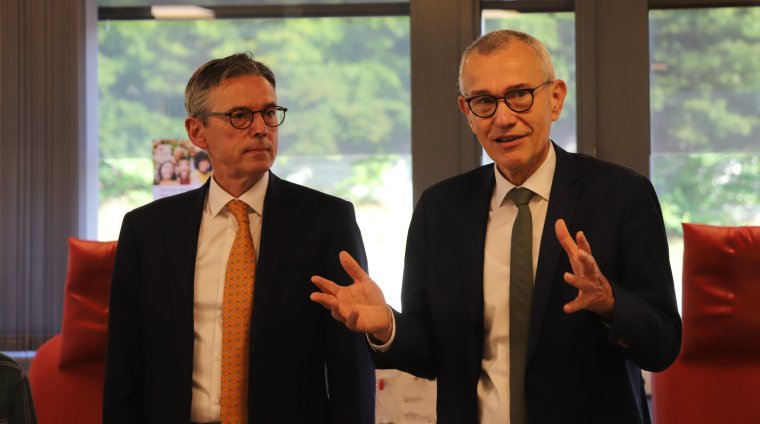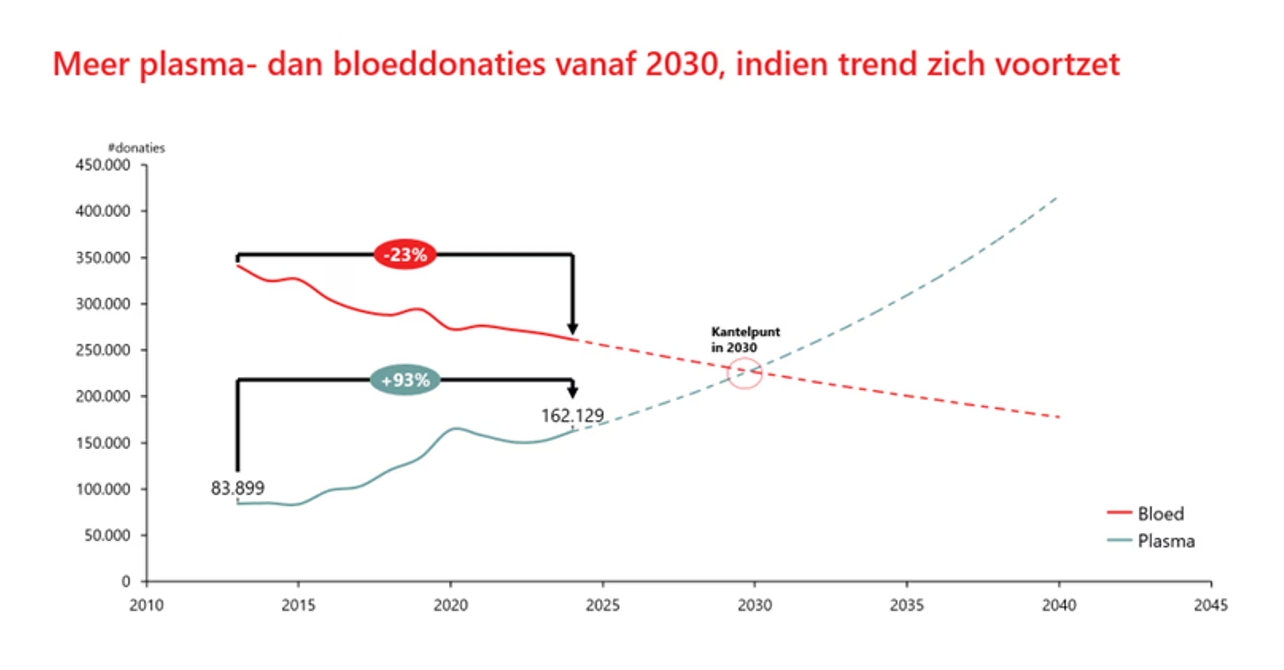25,000 additional plasma donors sought by 2029 to accelerate independence from foreign countries

The demand for plasma medication is increasing every year, both in Belgium and abroad. At the same time, Belgium is currently only half self-sufficient in plasma and therefore dependent on foreign imports. This makes us vulnerable, especially in the current international climate. Plasma-based medication is used, among other things, to treat immune system disorders, for example after chemotherapy. In order to meet this demand, 25,000 additional plasma donors are being sought by 2029. Federal Minister of Public Health Frank Vandenbroucke: “Plasma donation saves lives. Thanks to scientific progress, we can treat patients with plasma in an increasingly targeted and effective way. That is wonderful. That is why it is essential that we as a society remain in solidarity and continue to donate.”
The Red Cross and the minister are making the appeal in the context of a visit to the donor centre in Leuven on the occasion of World Donor Day today (14 June).
Last year, approximately 25,000 patients in Belgium received treatment with plasma medication. Plasma – the yellow component of blood – contains, among other things, immunoglobulins, proteins that are crucial for the functioning of our immune system. They strengthen the immune response, inhibit inflammation and protect against infections. This makes them useful in treating diseases of the immune system and inflammatory diseases.
The medication is therefore essential for people with a disturbed or weakened immune system. This includes people with congenital immune deficiencies, but also cancer patients after chemotherapy who temporarily do not produce their own antibodies. In addition, plasma is also used for people with severe burns or newborns with severe jaundice.
Increasing demand
The number of medical conditions for which immunoglobulins are used is increasing every year. In 2010, 1,125 kg of immunoglobulins were needed in Belgium. Today, this is more than 3,000 kg – an increase of more than 150% in 14 years. This trend is expected to continue.

Sara Merckx (39) suffers from a primary immunodeficiency and is given immunoglobulins weekly: “My body does not produce antibodies. The past 17 years have been a gigantic search. I am always exhausted and get sick very often. Every infection results in a battle that lasts for months. The redeeming diagnosis came at the end of last year: I suffer from a primary immunodeficiency.”
“Since December, I have been receiving weekly immunoglobulins via an IV. Recently, I have also been able to administer them myself at home. That helps: I have felt improvement in recent weeks, but we have to wait and see what my first blood test will say. I will probably need this for the rest of my life. That is a harsh reality, but the right diagnosis offers hope.”
Ties (11) suffers from a condition that prevents him from producing B cells and disrupts his immune system. He has been receiving immunoglobulins since he was two years old and has to go to the hospital every three weeks.
25,000 additional plasma donors
Belgium is currently approximately 46% self-sufficient. The rest of the plasma or the derived medication comes from countries such as the United States, which are also struggling with shortages. In order to limit this dependency, Minister Vandenbroucke is working on a systematic scaling up of the Belgian plasma capacity. In the new tender for the industry that processes plasma into immunoglobulins - which was recently approved by the Council of Ministers - an incentive is provided whereby those who process a higher weight (i.e. 5.6 grams per liter of plasma) are better assessed. In 2021, that was 10 percent, now it weighs in at 25 percent. "A strong own plasma supply enables us to care for people, without worries. That is why we are committed to a strong, independent and sustainable blood supply by the blood institutions. In difficult times, we have to take care of each other."
Belgian Red Cross-Flanders
Belgian Red Cross-Flanders today represents 67% of the plasma supply in Belgium. In 2024, 162,129 plasma donations were registered, the highest number ever.
“In 2009 we consciously opted for a strategic focus on plasma with Belgian Red Cross-Flanders ," say Chief executive officer, CEO Philippe Vandekerckhove: “In the past ten years, the number of plasma donations has doubled. We can count on a clear mandate and the support of the federal government.”
Donor Centers
Belgian Red Cross-Flanders has the objective to grow by 5% annually in plasma supply. A goal that has been achieved in recent years. Plasma donation is technically only possible in permanent donor centers. That is why we are systematically scaling up that network: every year we open two new centers to make the distance to donation as short as possible," says Vandekerckhove.
Call for new donors
In order to become self-sufficient as quickly as possible, Minister Vandenbroucke and Belgian Red Cross-Flanders a joint appeal: “Come donate plasma. We are looking for 25,000 new donors by 2029. Your donation saves lives.”
Plasma donation can be done every 14 days in one of the permanent donor centers. You can make an appointment via: https://www.rodekruis.be/wat-kan-jij-doen/geef-bloed-of-plasma/alles-over-plasma/ . The entire appointment takes just over an hour, the collection itself about 30 to 45 minutes.

